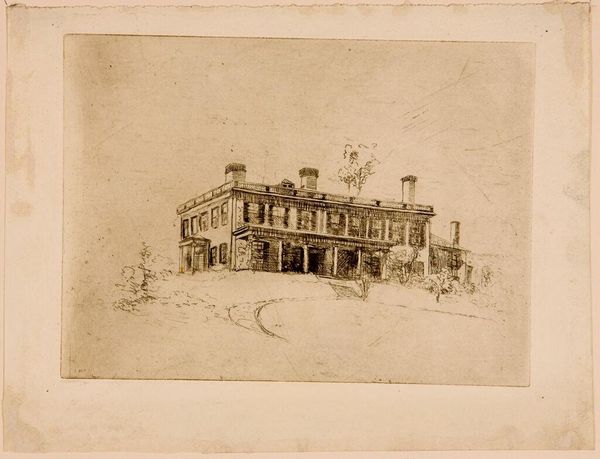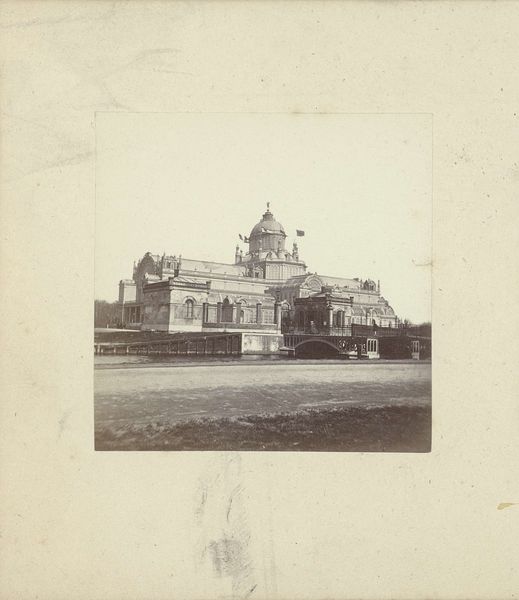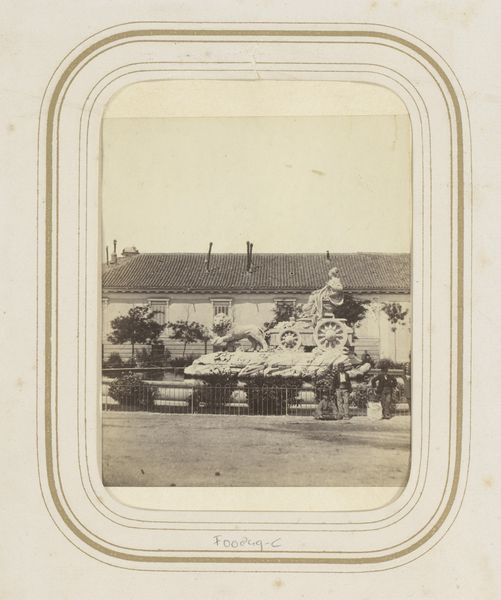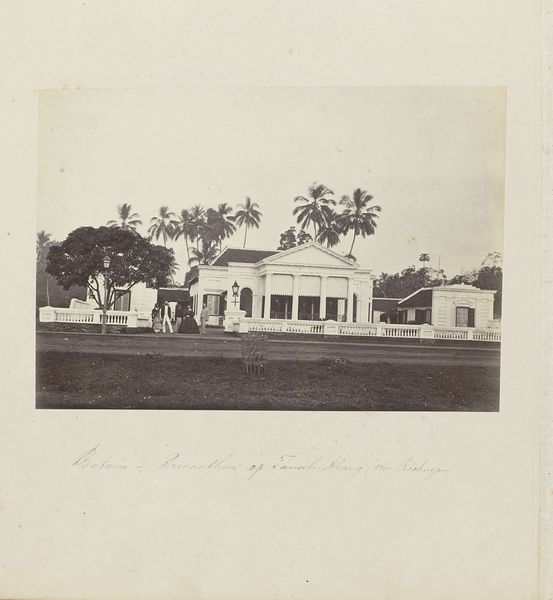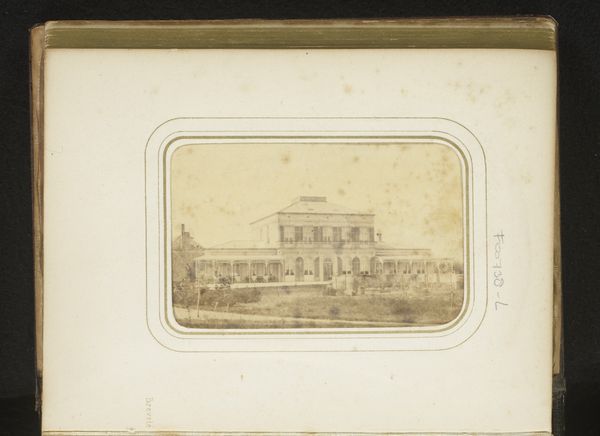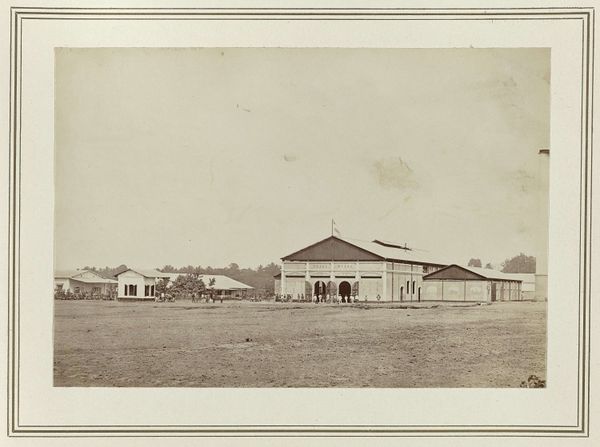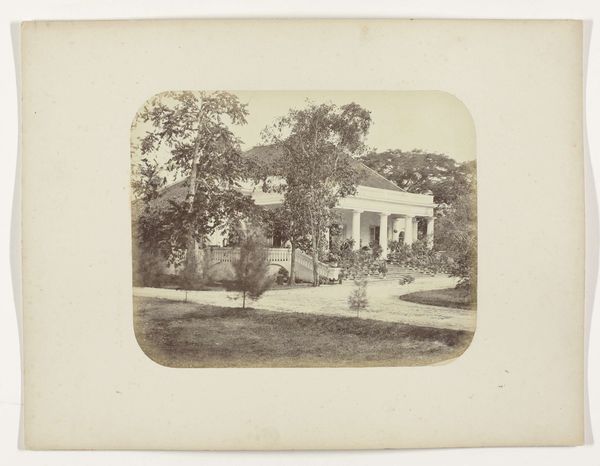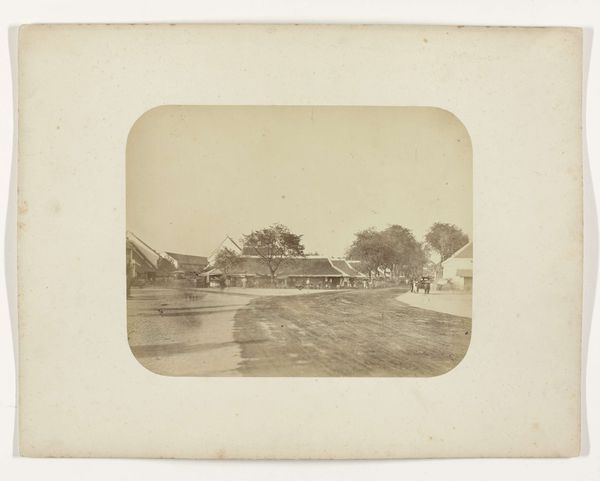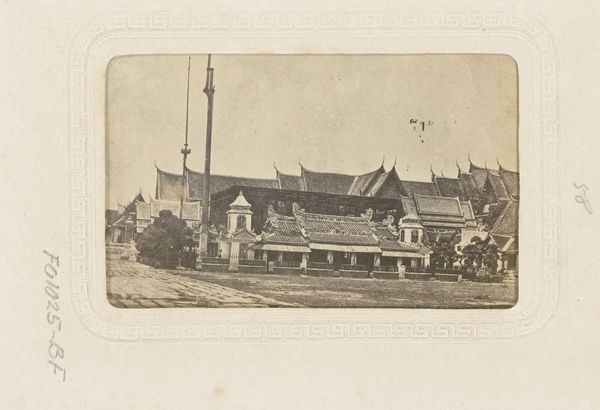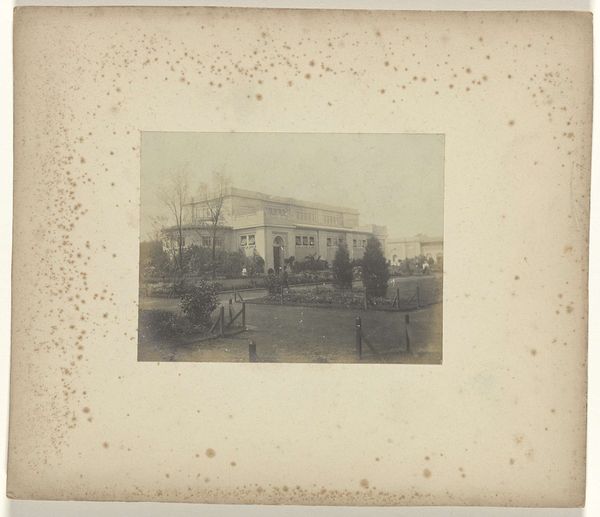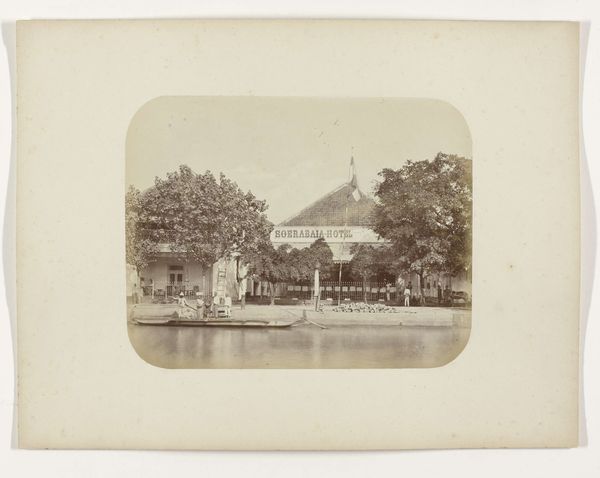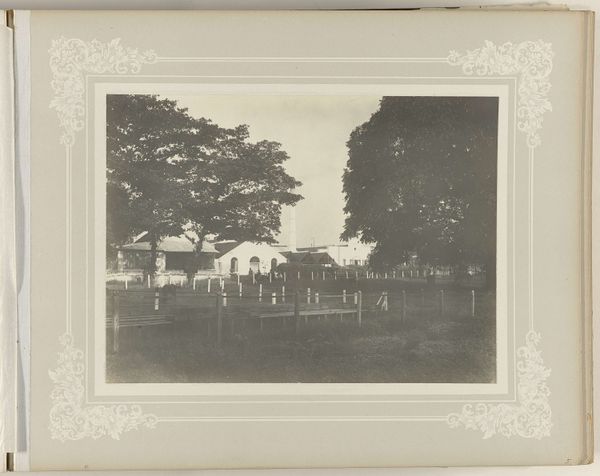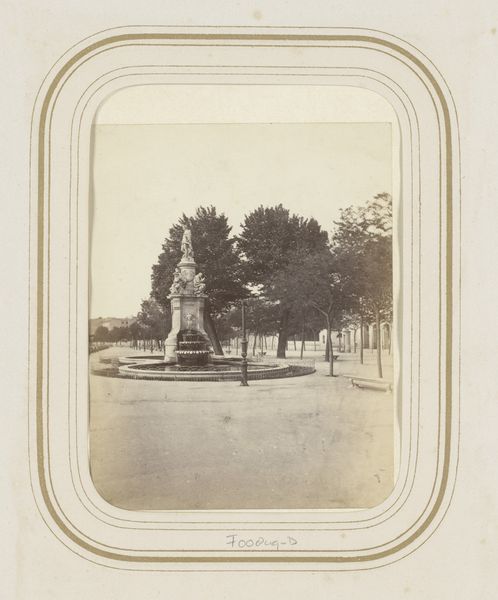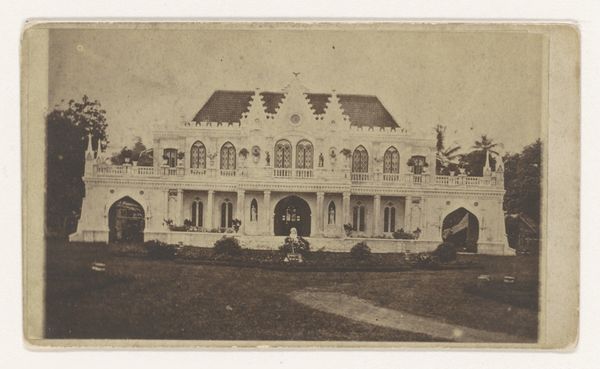
photography, albumen-print, architecture
#
dutch-golden-age
#
landscape
#
photography
#
orientalism
#
albumen-print
#
architecture
Dimensions: height 190 mm, width 235 mm, height 406 mm, width 521 mm
Copyright: Rijks Museum: Open Domain
Curator: What a curious architectural hybrid! It projects an air of almost fairytale-like extravagance. Editor: Indeed. Before us is a photograph titled "Villa van Raden Saleh in Batavia," dating from sometime between 1860 and 1880. The albumen print, by Woodbury & Page, presents the residence of the renowned Javanese painter Raden Saleh. It's currently held here at the Rijksmuseum. Curator: Raden Saleh… a painter of dramatic, Romantic scenes. It’s interesting how that sensibility translates into his choice of residence. You can see that almost dizzying mixture of European Gothic and something indigenously Indonesian in the structure’s silhouette. The sharp spires against what I assume would be the typically tropical light… it gives a conflicting feeling. Editor: It's an emblem of cultural exchange and perhaps also of cultural tension. Raden Saleh himself embodies that duality, having spent a significant portion of his life in Europe. This villa, in what was then the Dutch East Indies, seems a conscious attempt to reconcile his European artistic sensibilities with his Javanese heritage. The photograph itself speaks volumes about how European companies perceived and represented colonial subjects and settings. Curator: The villa stands as a visible representation of the psychological space Saleh inhabited—a man caught between two worlds. This wasn't just about aesthetics, it was about identity. Was he accepted wholly in either sphere? This building projects that yearning for integration while also standing distinctly apart. The architectural motifs taken alone may hold individual, comforting connotations of “home," but juxtaposed, they create a third space entirely, representing a new and specific cultural hybrid. Editor: Precisely. Woodbury & Page, as photographers catering to a European audience, played a crucial role in constructing a visual narrative of the exotic Orient. This photograph doesn't just show us a villa; it participates in a larger project of defining the relationship between colonizer and colonized through imagery. It begs questions about representation, about power dynamics. It’s also striking that architecture can be considered a self portrait of sorts. Curator: Absolutely. Thinking about the impact of colonial architecture allows me to approach a study of identity and place-making from new directions. Editor: For me, it reinforces how photography, even seemingly straightforward architectural documentation, is always implicated in broader socio-political narratives. Thank you for this fresh understanding!
Comments
No comments
Be the first to comment and join the conversation on the ultimate creative platform.
